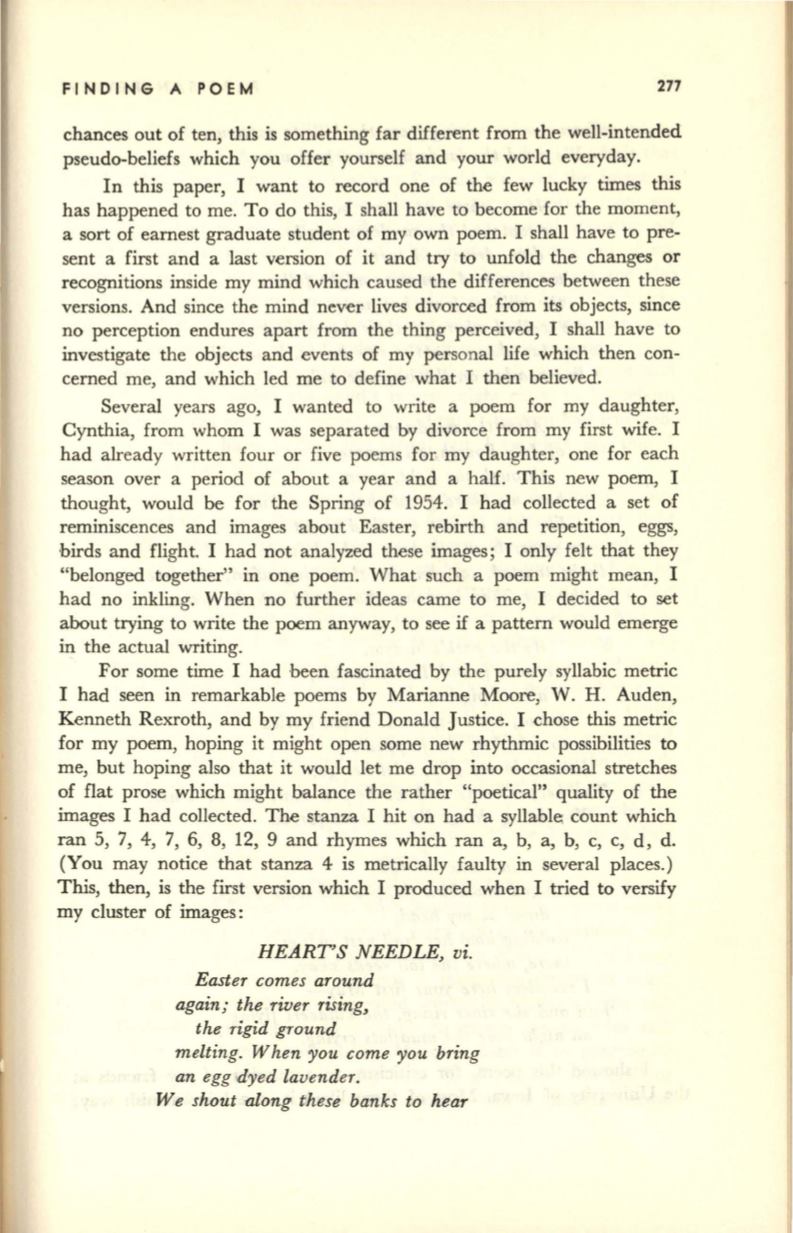
FINDING
A POEM
277
chances out of ten, this is something far different from the well-intended
pseudo-beliefs which you offer yourself and your world everyday.
In this paper, I want to record one of the few lucky times this
has happened to me. To do this, I shall have to become for the moment,
a sort of earnest graduate student of my own poem. I shall have to pre–
sent a first and a last version of it and try to unfold the changes or
recognitions inside my mind which caused the differences between these
versions. And since the mind never lives divorced from its objects, since
no perception endures apart from the thing perceived, I shall have to
investigate the objects and events of my personal life which then con–
cerned me, and which led me to define what I then believed.
Several years ago, I wanted to write a poem for my daughter,
Cynthia, from whom I was separated by divorce from my first wife. I
had already written four or five poems for my daughter, one for each
season over a period of about a year and a half. This new poem, I
thought, would be for the Spring of 1954. I had collected a set of
reminiscences and images about Easter, rebirth and repetition, eggs,
birds and flight. I had not analyzed these images; I only felt that they
"belonged together" in one poem. What such a poem might mean, I
had no inkling. When no further ideas came to me, I decided to set
about trying to write the poem anyway, to see if a pattern would emerge
in the actual writing.
For some time I had been fascinated by the purely syllabic metric
I had seen in remarkable poems by Marianne Moore, W. H. Auden,
Kenneth Rexroth, and by my friend Donald Justice. I chose this metric
for my poem, hoping it might open some new rhythmic possibilities to
me, but hoping also that it would let me drop into occasional stretches
of flat prose which might balance the rather "poetical" quality of the
images I had collected. The stanza I hit on had a syllable: count which
ran 5, 7, 4, 7, 6, 8, 12, 9 and rhymes which ran a, b, a, b, c, c, d, d.
(You may notice that stanza 4 is metrically faulty in several places.)
This, then, is the first version which I produced when I tried to versify
my cluster of images:
HEART'S NEEDLE, vi.
Easter comes around
again,. the river rising,
the rigid ground
melting. When you come you bring
an egg dyed lavender.
We shout along these banks to hear


